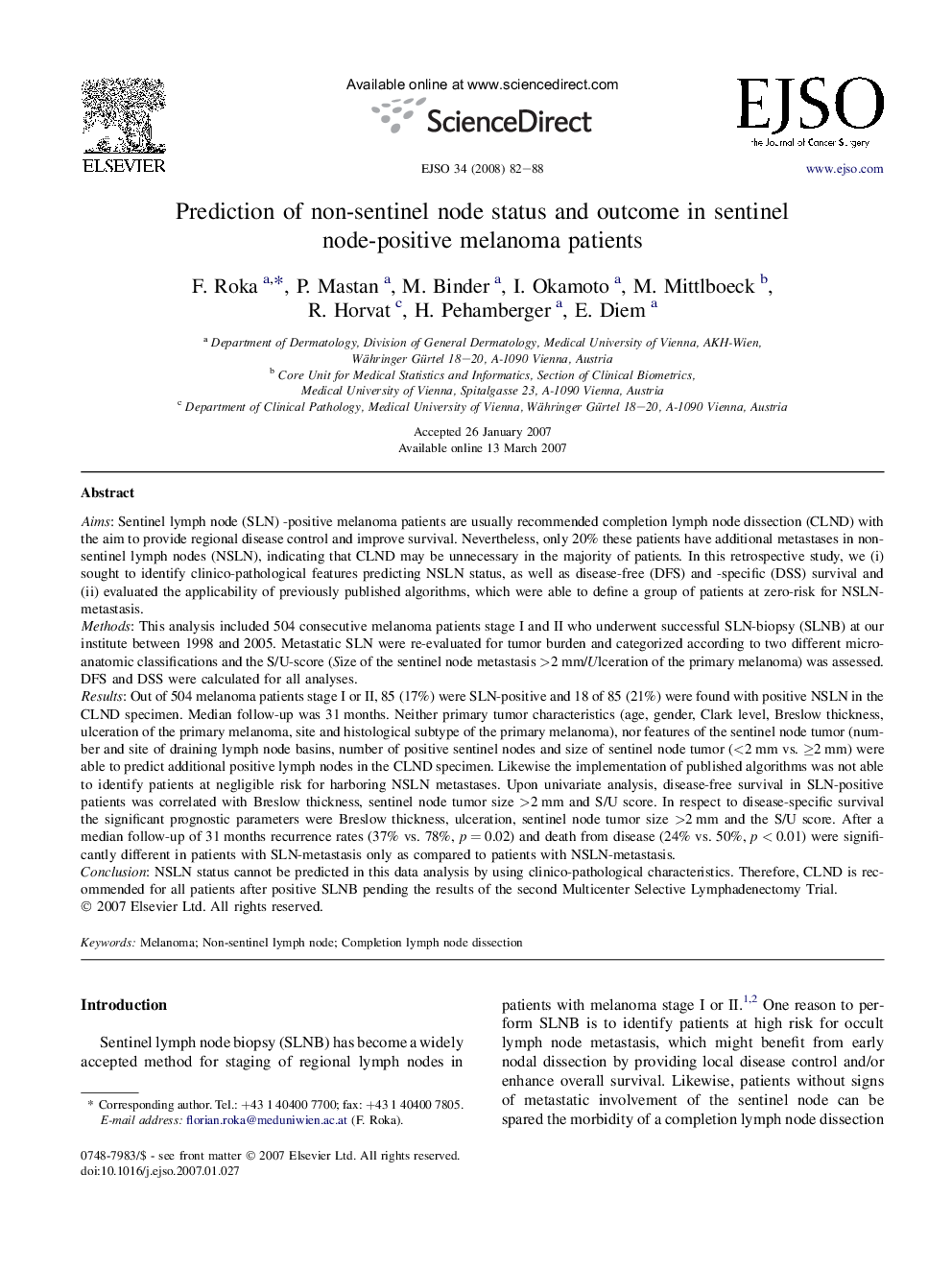| Article ID | Journal | Published Year | Pages | File Type |
|---|---|---|---|---|
| 3987661 | European Journal of Surgical Oncology (EJSO) | 2008 | 7 Pages |
Aims: Sentinel lymph node (SLN) -positive melanoma patients are usually recommended completion lymph node dissection (CLND) with the aim to provide regional disease control and improve survival. Nevertheless, only 20% these patients have additional metastases in non-sentinel lymph nodes (NSLN), indicating that CLND may be unnecessary in the majority of patients. In this retrospective study, we (i) sought to identify clinico-pathological features predicting NSLN status, as well as disease-free (DFS) and -specific (DSS) survival and (ii) evaluated the applicability of previously published algorithms, which were able to define a group of patients at zero-risk for NSLN-metastasis.Methods: This analysis included 504 consecutive melanoma patients stage I and II who underwent successful SLN-biopsy (SLNB) at our institute between 1998 and 2005. Metastatic SLN were re-evaluated for tumor burden and categorized according to two different micro-anatomic classifications and the S/U-score (Size of the sentinel node metastasis >2 mm/Ulceration of the primary melanoma) was assessed. DFS and DSS were calculated for all analyses.Results: Out of 504 melanoma patients stage I or II, 85 (17%) were SLN-positive and 18 of 85 (21%) were found with positive NSLN in the CLND specimen. Median follow-up was 31 months. Neither primary tumor characteristics (age, gender, Clark level, Breslow thickness, ulceration of the primary melanoma, site and histological subtype of the primary melanoma), nor features of the sentinel node tumor (number and site of draining lymph node basins, number of positive sentinel nodes and size of sentinel node tumor (<2 mm vs. ≥2 mm) were able to predict additional positive lymph nodes in the CLND specimen. Likewise the implementation of published algorithms was not able to identify patients at negligible risk for harboring NSLN metastases. Upon univariate analysis, disease-free survival in SLN-positive patients was correlated with Breslow thickness, sentinel node tumor size >2 mm and S/U score. In respect to disease-specific survival the significant prognostic parameters were Breslow thickness, ulceration, sentinel node tumor size >2 mm and the S/U score. After a median follow-up of 31 months recurrence rates (37% vs. 78%, p = 0.02) and death from disease (24% vs. 50%, p < 0.01) were significantly different in patients with SLN-metastasis only as compared to patients with NSLN-metastasis.Conclusion: NSLN status cannot be predicted in this data analysis by using clinico-pathological characteristics. Therefore, CLND is recommended for all patients after positive SLNB pending the results of the second Multicenter Selective Lymphadenectomy Trial.
